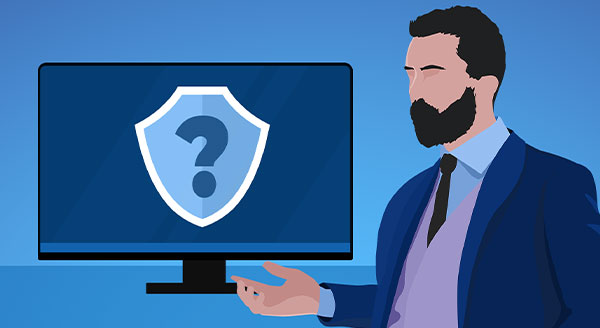Cybersecurity is a constantly changing field. A new technology is developed to keep criminals at bay, but soon after, bad actors find a way around it. As a business leader, you have a lot to manage, but don’t overlook the importance of managing cybersecurity risks, too. Asking these five questions prioritizes keeping data and systems protected.
You already know the importance of protecting data. Leaked or stolen personal information can be devastating for your business reputation, but there’s so much more involved with cybersecurity. Your employees may be working from home more, which means you have remote equipment to manage. You could have Internet of Things endpoints, and automatic ordering and fulfillment adds more points of entry to secure.
Execs need to know what is being done to identify, protect, and detect. Plus, they should have a good idea of how the business is set up to respond and recover. These five questions can help you manage cybersecurity efforts.
#1 What assets and entry points do we have that need protection?
You need to have a full inventory of what you have to protect; otherwise, you can’t expect your cybersecurity to be effective. Determine what needs monitoring and management, as well as your priorities.
Asset inventory management helps ensure all licensing and manufacturer upgrades are current. This keeps your tech patched against the latest known threats.
#2 How are we securing our technology?
Taking a multi-layered approach is best. Besides antivirus software, your business also needs firewalls (even many firewalls). Still, it doesn’t stop there. You can also take advantage of:
- identity and access management tools;
- encryption;
- vulnerability scans;
- penetration testing;
- employee training in defending against cyberthreats.
#3 How do we detect problems?
Be proactive about detecting incidents. Many breaches are not immediately detected, which makes the damage worse. Build capabilities to identify any vulnerabilities before the bad guys do.
Most antivirus software detects malware, spyware, ransomware, and more. You’ll get an alert of a risk and be able to cut the risk. You can also collect and analyze security logs to help identify potential threats.
#4 What is our plan in the event of an incident?
Few of us think at our best in crisis situations. It’s much better to anticipate the worst and think ahead. Leadership can make a plan to respond to ransomware, establish a disaster plan, and consider business continuity. You can also determine everyone’s roles and responsibilities. Learn who needs to be alerted, and decide who will do so. It all helps you get back to business as usual more effectively.
Once you have business recovery plans in place, test them. For instance, you don’t want to wait until a cyber incident to learn that your data backup wasn’t working.
#5 What are we doing to create a cybersecurity culture?
You may think about company culture as mission and values. That influences hiring, employee engagement, and business success. Yet you can also encourage an environment that motivates cybersecurity behaviors. Help your team members understand they have a role to play in championing security.
You might establish a cybersecurity culture by:
- asking these five questions;
- encouraging regular backups;
- discouraging people from downloading software without prior approval;
- establishing a bring-your-own-device policy;
- educating employees about threats;
- communicating who employees can contact if they suspect malware or phishing.
The more you know
Learning more about cybersecurity can only help your business. A managed service provider is a great resource for answers to these questions. Partner with us today!

